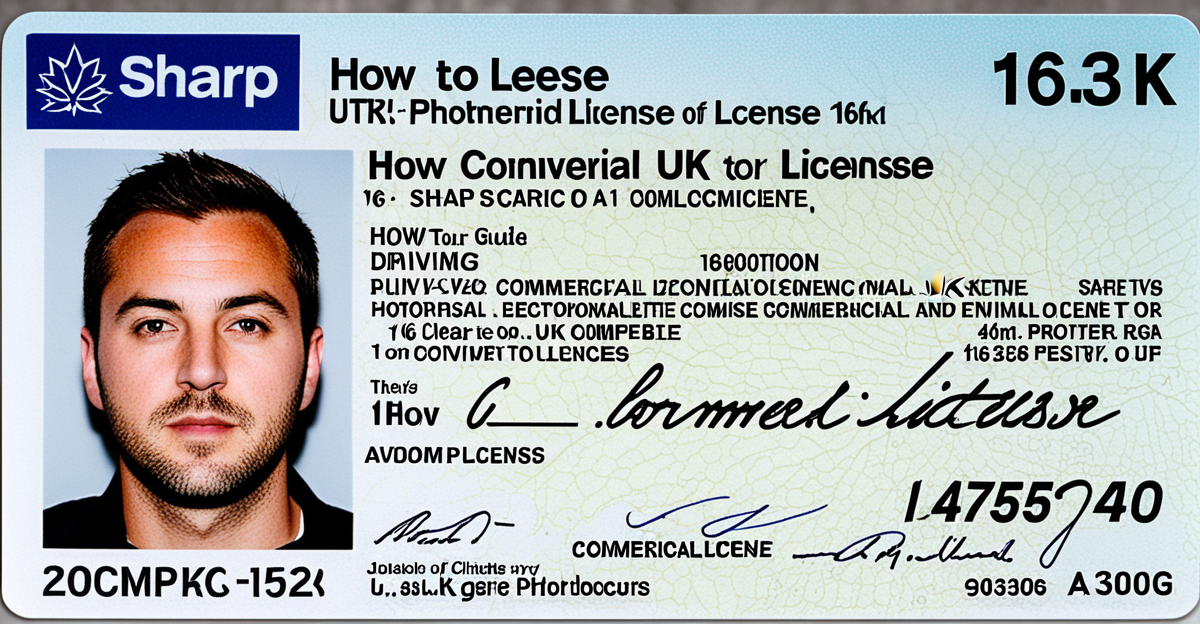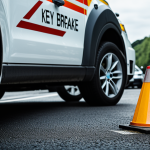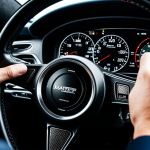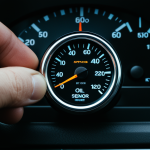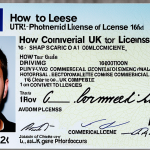Quick Guide: Upgrading a UK Driving License to Commercial Status
Upgrading a UK driving license to commercial status involves a distinct license conversion process that transforms a standard driving entitlement into one that authorizes the holder to operate heavy goods vehicles or passenger-carrying vehicles. The key difference between a standard license and a commercial driving license UK is the vehicle type and weight category each permits. Commercial licenses cover specific categories like HGV or PCV, which standard licenses do not.
The process starts by confirming eligibility, including age and medical criteria, before moving onto applications. Applicants must complete necessary medical evaluations and submit specific documents to the DVLA. Essential forms such as the D2 (application) and D4 (medical) must be obtained and correctly filled.
Also read : How to Legally Import a Vintage Motorcycle into the UK: Your Complete Step-by-Step Handbook
Understanding the steps makes the upgrade manageable:
- Confirm eligibility and residency status.
- Obtain and complete application and medical forms.
- Book and attend medical assessments.
- Prepare and pass the Driver CPC theory test.
- Undergo practical training if required.
- Submit documents and await license issuance.
Following this structured license conversion process ensures a smooth transition, opening career avenues within the professional driving sector.
Also to discover : Boost Your Electric Vehicle’s Winter Range: Must-Know Driving Tips for UK Drivers
Eligibility Criteria for a Commercial Driving License
Eligibility for a commercial driving license UK hinges on specific age, residency, and health standards. The minimum age requirement in the UK for HGV licenses is usually 18 years, though some categories may require you to be 21. Residency status mandates that applicants must be UK residents to apply for the UK driving license upgrade to commercial status.
Medical fitness is critical; applicants must undergo a DVLA medical examination to confirm they meet the DVLA health requirements. This includes checks for vision, cardiovascular health, and any conditions that could impair safe driving. The medical exam must be passed to proceed with the license conversion process.
Additionally, your driving history and criminal record are reviewed. Serious offences may impact your eligibility or result in delays. The DVLA ensures that applicants with a clean or acceptable record gain commercial driving privileges, aligning with road safety standards.
Understanding these commercial license eligibility UK rules is essential before starting your application. Meeting age, health, and residency criteria forms the foundational step in the license conversion process.
Quick Guide: Upgrading a UK Driving License to Commercial Status
Upgrading your UK driving license to commercial status requires navigating a clear license conversion process. The core distinction lies in the types of vehicles permitted. While a standard license covers everyday cars and small vehicles, a commercial driving license UK authorizes driving heavier, larger vehicles such as lorries or buses.
To initiate the upgrade, start by confirming your eligibility against age, residency, and health criteria. Then, collect key documents including application form D2 and medical form D4, which are essential for the DVLA. The license conversion process also includes attending a medical examination that assesses fitness to drive commercial vehicles. Next, you must pass the Driver Certificate of Professional Competence (Driver CPC) theory test, which covers road safety and transport regulations.
Depending on your targeted vehicle category, practical training might be required before you can take the driving test. All documents are submitted to the DVLA, which manages the application. With careful preparation and adherence to these steps, upgrading your license opens new professional opportunities in commercial driving within the UK.
Quick Guide: Upgrading a UK Driving License to Commercial Status
Upgrading your UK driving license to commercial status involves a clear, step-by-step license conversion process designed to authorize you to operate heavy goods or passenger vehicles. The main distinction lies in vehicle categories: a standard license covers cars, while a commercial driving license UK allows driving HGVs (Heavy Goods Vehicles) or PCVs (Passenger Carrying Vehicles).
To start the UK driving license upgrade, confirm your eligibility based on age, residency, and medical fitness. The process includes obtaining the correct forms, such as D2 for application and D4 for medical reports. You then book and attend a medical exam to meet DVLA health standards. Passing the Driver CPC theory test is mandatory, ensuring knowledge of commercial road safety and regulations.
Practical training may be necessary depending on the commercial vehicle class you aim to drive. Once training and tests are completed, submit your documents to the DVLA for processing. This step-by-step approach in the license conversion process maximizes your chances of a smooth upgrade while opening doors to professional driving careers.
Quick Guide: Upgrading a UK Driving License to Commercial Status
Upgrading your UK driving license to a commercial driving license UK involves a detailed license conversion process that enables you to legally drive heavy goods vehicles or passenger-carrying vehicles. The core difference between a standard and commercial license lies in the permitted vehicle categories and weight limits. While a standard license covers everyday cars, the commercial license authorizes operation of HGVs and PCVs, essential for professional driving careers.
The UK driving license upgrade follows several key steps: first, confirm eligibility based on age, residency, and medical fitness. Next, obtain the necessary application forms—primarily the D2 and D4 forms—and complete them. An important part of the conversion is passing the Driver CPC theory test, which covers commercial vehicle regulations and safety protocols.
Depending on your chosen vehicle category, practical training might be necessary before the driving test. This step ensures familiarity with larger vehicles and their specific handling characteristics. Finally, submit all documents and await the DVLA’s decision. Following this structured license conversion process will help streamline your path to obtaining a commercial license and accessing new professional opportunities.
Quick Guide: Upgrading a UK Driving License to Commercial Status
Upgrading your UK driving license to a commercial driving license UK requires a clear understanding of the distinct vehicle categories involved. Unlike a standard license, which covers typical cars and light vehicles, the commercial license authorizes you to drive heavy goods vehicles (HGVs) or passenger-carrying vehicles (PCVs), essential for professional roles.
The license conversion process begins with confirming your eligibility, including age, residency, and medical fitness. Next, obtain and carefully complete the necessary documents such as the D2 application and D4 medical forms. You must then attend a DVLA medical examination to meet strict health requirements and pass the Driver CPC theory test to demonstrate knowledge of commercial driving regulations.
Depending on the vehicle class you intend to operate, practical training might be required before taking the driving test. It’s important to prepare thoroughly by studying official materials and attending approved training courses when applicable. Completing these steps accurately ensures a smooth UK driving license upgrade, enabling access to new career opportunities in commercial driving.
Quick Guide: Upgrading a UK Driving License to Commercial Status
Upgrading your UK driving license to a commercial driving license UK involves following a precise license conversion process that ensures you meet all legal and practical requirements. The fundamental difference between a standard and commercial license is the vehicle category allowed: commercial licenses cover heavier vehicles like HGVs and PCVs, unlike a standard license restricted to cars and light vehicles.
The essential steps in the UK driving license upgrade include:
- Confirming eligibility based on age, residency, and health.
- Obtaining and completing application (D2) and medical (D4) forms.
- Passing a medical examination meeting DVLA standards.
- Successfully completing the Driver CPC theory test.
- Undergoing any required practical training for specific vehicle types.
- Submitting all documentation to the DVLA for approval.
Each step plays a critical role in securing your commercial license. Being well-prepared and aware of the differences in license categories will help you navigate the license conversion process efficiently. This approach opens up professional driving opportunities involving heavier vehicles not covered by standard licenses.
Quick Guide: Upgrading a UK Driving License to Commercial Status
The UK driving license upgrade to a commercial driving license UK follows a structured license conversion process designed to authorize driving heavier or passenger-carrying vehicles. Unlike a standard license, which covers regular cars, the commercial license is essential for operating HGVs or PCVs.
Start by confirming eligibility, focusing on age, residency, and medical fitness. Then obtain essential forms such as the D2 application and D4 medical report, which are mandatory for the DVLA. After completing the forms, attendees must undergo a DVLA medical assessment to meet strict health standards.
Next, passing the Driver CPC theory test is required; it covers commercial driving laws and safety regulations. Depending on the vehicle category, practical training may be necessary before attempting the driving test.
Once all tests and training are complete, submit the collected documents for DVLA approval. This license conversion process ensures compliance with legal requirements and opens new professional driving opportunities. Preparing carefully for each step enhances the likelihood of a smooth and successful UK driving license upgrade.
Quick Guide: Upgrading a UK Driving License to Commercial Status
Upgrading your UK driving license to a commercial driving license UK involves a structured license conversion process that authorizes you to drive heavy goods vehicles (HGVs) or passenger-carrying vehicles (PCVs). The fundamental distinction lies in vehicle categories: a standard license covers cars, while a commercial license permits operation of larger, heavier vehicles crucial for professional driving careers.
The UK driving license upgrade starts with confirming eligibility, then obtaining and completing key forms D2 (application) and D4 (medical). Next, you must pass a medical examination meeting DVLA health requirements and successfully complete the Driver CPC theory test, designed to assess knowledge of commercial vehicle regulations and road safety.
Depending on your desired vehicle category, practical training may be mandatory before taking the driving test. Practical preparation ensures competence with the specific demands of commercial vehicles.
Following the license conversion process carefully means submitting all necessary documents to the DVLA and awaiting their approval. This step-by-step approach facilitates a smooth UK driving license upgrade, opening new career opportunities with a commercial driving license UK.
Quick Guide: Upgrading a UK Driving License to Commercial Status
The UK driving license upgrade from a standard license to a commercial driving license UK involves a structured license conversion process tailored to permit operation of larger vehicles like HGVs and PCVs. Unlike the standard license, which restricts holders to cars and light vehicles, a commercial license covers specific categories essential for professional driving roles.
Key steps begin with confirming eligibility related to age, residency, and medical fitness. Applicants must secure and complete the D2 application and D4 medical forms accurately. Following this, a DVLA medical assessment is mandatory to fulfill health requirements. Passing the Driver CPC theory test is next, designed to assess knowledge of commercial vehicle safety and regulations.
Depending on the target vehicle class, practical training may be necessary before undertaking the driving test. This ensures drivers are proficient with the handling of heavier, specialized vehicles. Throughout the license conversion process, careful preparation and adherence to each step is vital for a smooth transition.
Successfully upgrading your license grants access to a broad range of professional driving opportunities, distinguishing commercial licenses from standard driving entitlements.

